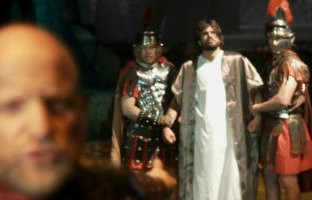Horror and empathy: My response to a gory Passion play

A couple years ago I bought tickets to The Thorn, a modern Passion play. It was being performed at the Seacoast Church in North Charleston, South Carolina. I drove there from my home in North Carolina on Good Friday. It was curiosity more than piety that impelled me.
I had recently read an article by Patton Dodd criticizing contemporary Passion dramas, such as The Thorn, for being excessively violent. In the essay, published in Slate, Dodd shows how these plays, like Mel Gibson's film The Passion of the Christ, depict extremely gory tortures that have little basis in scripture. He is troubled by such lurid sensationalism. He sees it as a manifestation of our culture's hunger for macabre visual thrills, regardless of ethical considerations.
I took my Easter journey to test Dodd's conclusion. I wondered: Is exaggerated violence in Passion plays merely a product of our baser natures? Or does the savagery actually have a proper place in the crucifixion's meaning?




